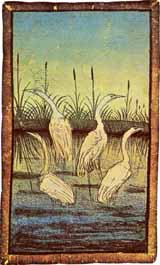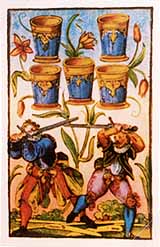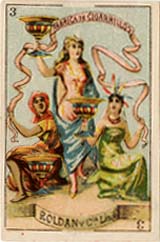Art in Playing Cards
|
…although their measurements are small, they are not thereby limited in their imaginative range, or the skill and care of their execution. At no time was smallness more prized that at the end of the Middle Ages, especially during the first half of the fifteenth century in northern Europe… ART IN PLAYING CARDSThe Playing-Card as a Vehicle for Aesthetic Expression |
Based on a talk given to the International Playing-Card Society, London, on 10th August 2002.

By Simon Wintle
Member since February 01, 1996
I am the founder of The World of Playing Cards (est. 1996), a website dedicated to the history, artistry and cultural significance of playing cards and tarot. Over the years I have researched various areas of the subject, acquired and traded collections and contributed as a committee member of the IPCS and graphics editor of The Playing-Card journal. Having lived in Chile, England, Wales, and now Spain, these experiences have shaped my work and passion for playing cards. Amongst my achievements is producing a limited-edition replica of a 17th-century English pack using woodblocks and stencils—a labour of love. Today, the World of Playing Cards is a global collaborative project, with my son Adam serving as the technical driving force behind its development. His innovative efforts have helped shape the site into the thriving hub it is today. You are warmly invited to become a contributor and share your enthusiasm.
Related Articles
Most Popular
Our top articles from the past 28 days




